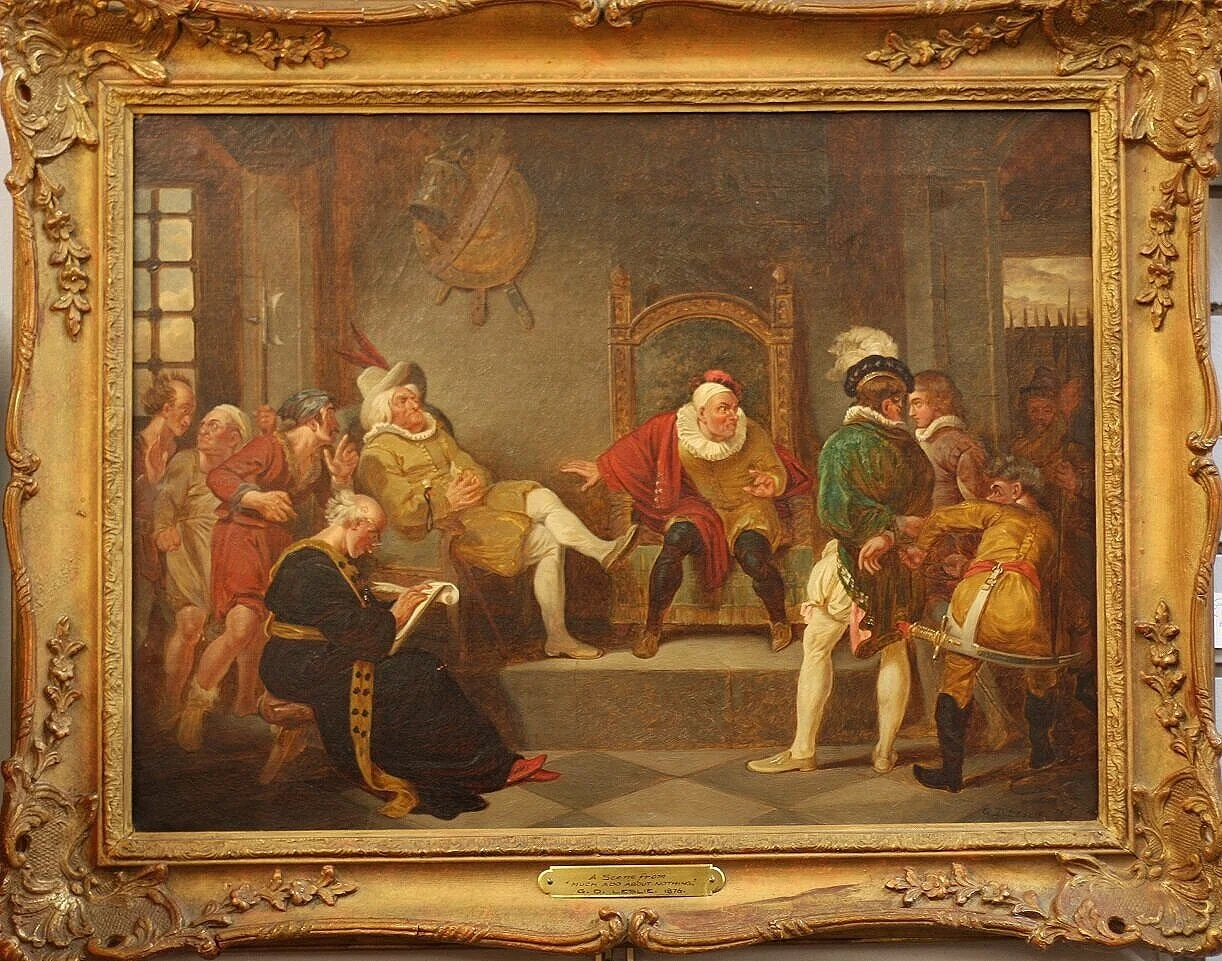SOLD - George Dunlop Leslie
English
(1835-1921)
A scene from: “Much Ado About Nothing” - 1876
Oil on Canvas
Signed lower right
24” x 18” w/o frame
28” x 23” w/ frame
English
(1835-1921)
A scene from: “Much Ado About Nothing” - 1876
Oil on Canvas
Signed lower right
24” x 18” w/o frame
28” x 23” w/ frame
English
(1835-1921)
A scene from: “Much Ado About Nothing” - 1876
Oil on Canvas
Signed lower right
24” x 18” w/o frame
28” x 23” w/ frame
Leslie was born into an artistic family, his father was the notable genre painter Charles Robert Leslie RA, and his uncle Robert Leslie was a marine artist. He studied art first at Cary's Art Academy, then from 1854 at the Royal Academy. His first exhibition at the Academy was in 1859, and he showed his work every year thereafter. He became an Associate (ARA) in 1868 and a full Royal Academician (RA) in 1876.
George Dunlop Leslie lived early on in St John's Wood (London), and was part of the St John's Wood Clique, a group of artists who favoured light-hearted genre subjects.
His early works, such as Matilda (1860)[2] showed the strong influence of the Pre-Raphaelites, but he settled into a more academic, aesthetic, style of painting with the aim of showing "pictures from the sunny side of English domestic life". He often used children as subjects and his work was praised by John Ruskin for its portrayal of the "sweet quality of English girlhood".[3] One of his pictures, This is the Way we Wash our Clothes was used as a poster in an advertising campaign for soap. Despite its apparently trivial subject matter, however, Leslie's work was highly regarded by critics of the time.[4]
In 1889 during his time at Riverside house in Wallingford Leslie is credited with painting four angel murals in St Leonards Church.
The author's punt (from Leslie's book Our river, 1888)
Leslie was also an author and had several books published. Our river (1888), Letters to Marco (1893) and Riverside letters (1896) were all illustrated by him in black and white, and based on personal observations of life and nature in his local area. He also wrote a history of the early years of the Royal Academy - The inner life of the Royal Academy.
Leslie was married to Lydia. They had a daughter Alice (depicted in his painting Alice in Wonderland) and a son Peter Leslie (1877–1953) who was also an artist.[1] Amongst Leslie's artistic friends and acquaintances were Sir Edwin Landseer, Frederick Walker and Henry Stacy Marks. He died at Lindfield in Sussex.[5]
In June 2000, The daughters of Eve,[6] considered to be one of Leslie's finest paintings, and which had hung unnoticed for 40 years in a south Wales school (Llantarnam Comprehensive), was sold for £170,000 to a private collector. The money raised was used to fund much needed building work to the school.[7]
Source: Wikipedia







